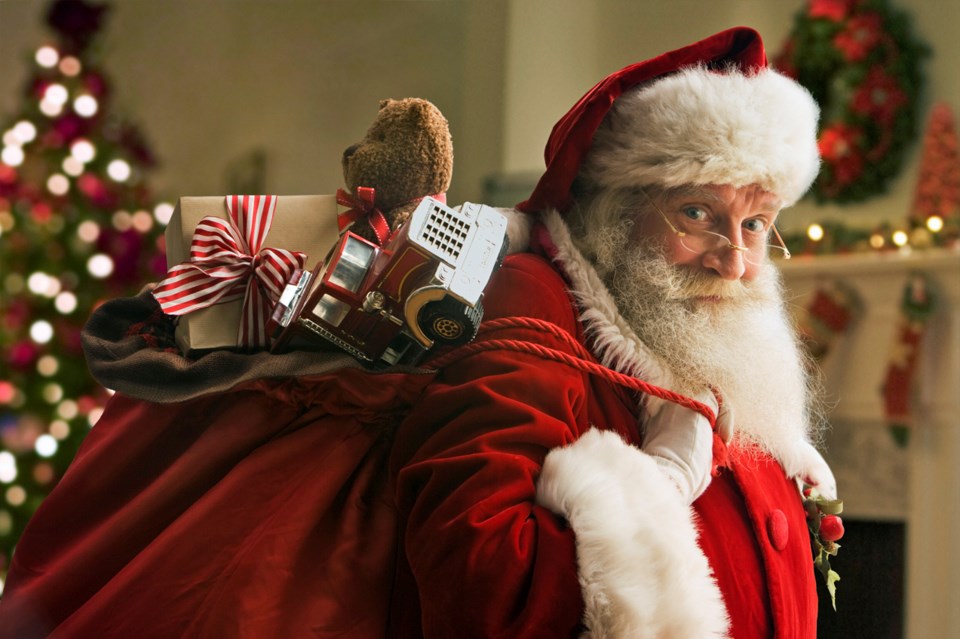Editor's note: This column first appeared in the Dec. 19, 2013 edition of the Prince George Citizen.
At this time of year, Christmas can't help but be on everyone's mind.
Santa Claus bringing all sorts of wonderful things to good boys and girls.
Reindeer prancing and pawing on the roof.
Christmas trees ornately dressed, just waiting for their final garnish of packages and presents.
Even the weather appears to be cooperating, hiding the drab grays of our city in a frosting of snow.
This is truly a marvelous time of the year when every "hello" is just a little bit warmer and each smile carries a little more joy.
These are the images that some associate with the Christmas season. But there are a few naysayers out there that, well, just don't believe! Can you imagine?
Each year, around this time of year, I get e-mails from all sorts of Grinches young and old trying to explain the scientific impossibility of Santa.
So, let's have a little look at the science of Santa. Could he do what he does - scientifically speaking?
Could he deliver all of the presents that he has to deliver in "just one night"?
Well, it is not really just "one night" in the sense of only being "eight hours" - or even "four hours" if he only starts delivering at midnight. The fact that the world has 24 time zones means that there are 24 midnights for each and every day. Add on the additional hours of darkness as night is long at this time of the year and he has about 33 hours in total to do all of his deliveries. That is much longer than most of the bah-humbug crowd realize.
Still, with the number of good boys and girls increasing each year, this still results in some pretty fast deliveries.
Some Grinches would argue that Santa would need to deliver 3,000 presents per second to stay on schedule. Of course, what these Grinches don't understand is what Einstein explained so long ago. Time is relative. The faster you move, the slower time passes.
The slowing down of time results in Santa actually having all the time he needs to deliver presents provided that he is moving in a relative way. And relatives are an important part of Christmas as everyone knows.
(Every notice how much Einstein resembles Santa? There could be some relativity there.)
But how does Santa get all those presents in the first place?
Some Grinches would argue that there is not enough time to make all of the presents. And although it would be easy to say that the elves at the North Pole workshop move at the speed of light, that is not actually the case.
Rather, Santa used to use an assembly line. Indeed, he invented it. It was only during a nocturnal visit to the North Pole that Henry Ford learned of the idea and incorporated it for making cars.
More recently, Santa has had to step up the pace. After all, the world's population has doubled in the last 40 years, requiring twice as many presents. It is no coincidence, though, that we have moved to an age of miniaturization. And it is no coincidence that transistors and computer circuits have allowed automation to achieve new heights.
Modern production practices have all been borrowed from developments in Santa's workshop. In his efforts to make sure that all of the good children in the world get the presents that they deserve, he has also led the world in developing better manufacturing practices.
Some Grinches also argue that Santa wouldn't have enough energy to do everything. But as anyone who has ever tried to diet knows, cookies have an amazing amount of energy. In adults, this energy goes straight to fat around our middles but for Santa, it is all the energy he needs to do all that he does.
Further, to physics does come to the rescue because the very fabric of time and space provide zero point energy that augments that found in cookies and fruitcakes and other Christmas delicacies. Energy, for Santa, is not really a problem.
Anyway, I know there is a Santa Claus because presents do appear under the tree on Christmas and around this time each year, everyone is just a little nicer.
There is a look in their eyes that says that they, too, believe in the wonders of Christmas. So, to one and all, I hope that the season brings you peace and joy, whatever your beliefs.



